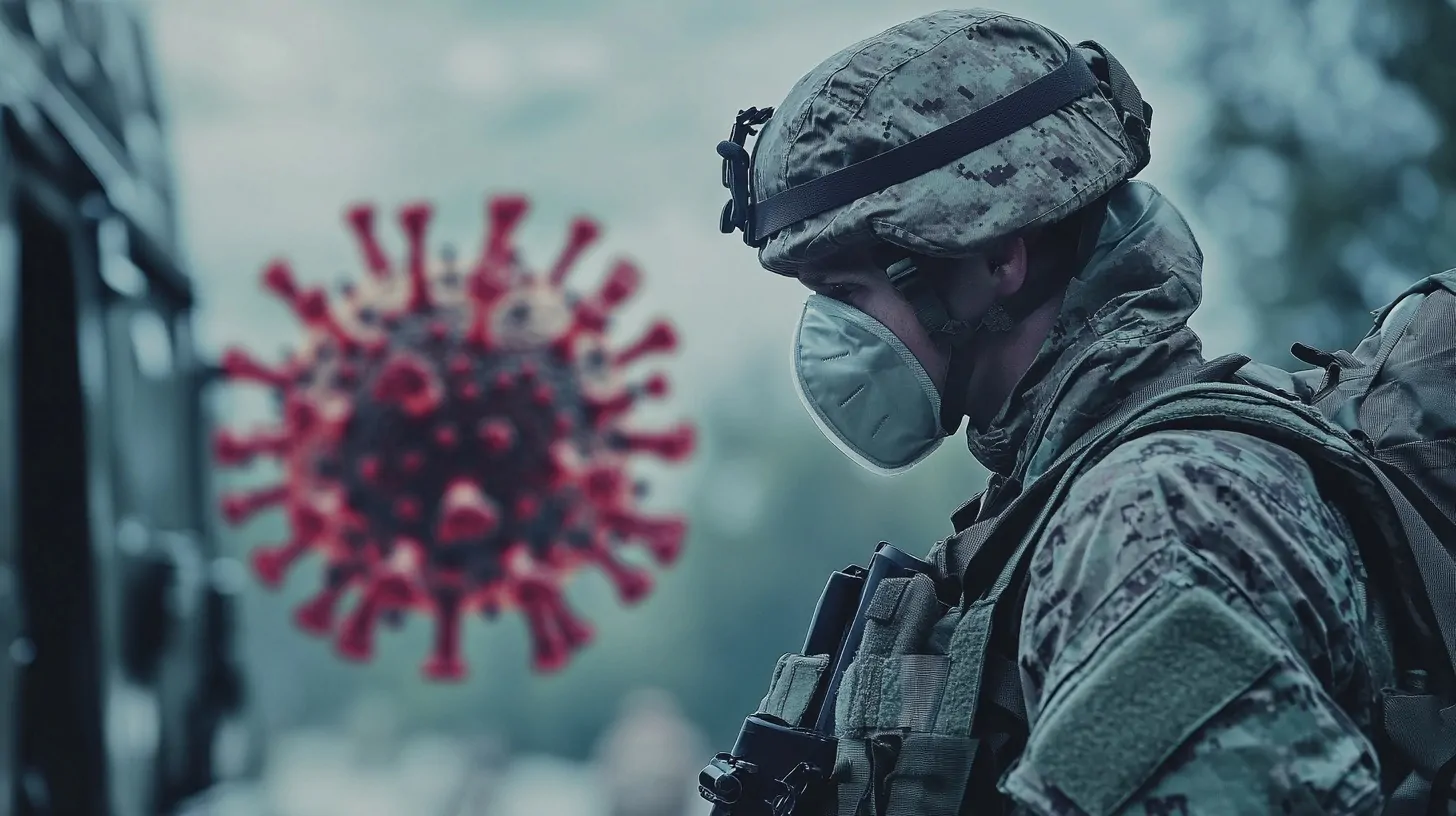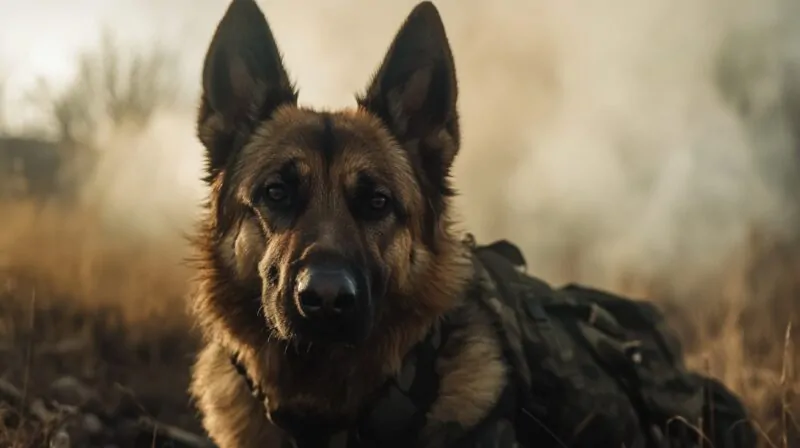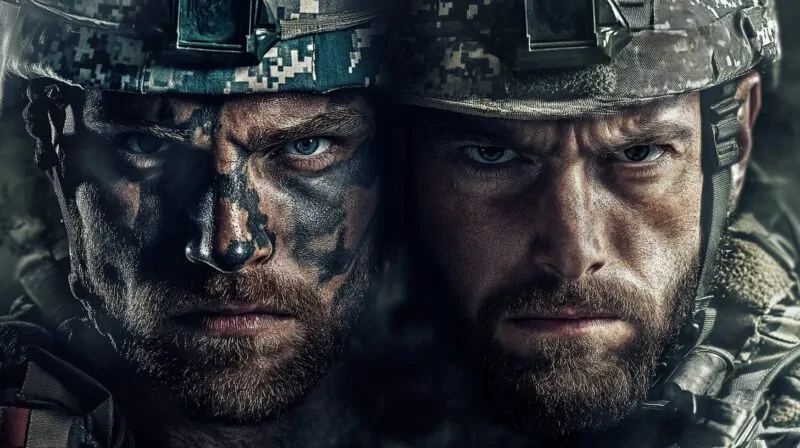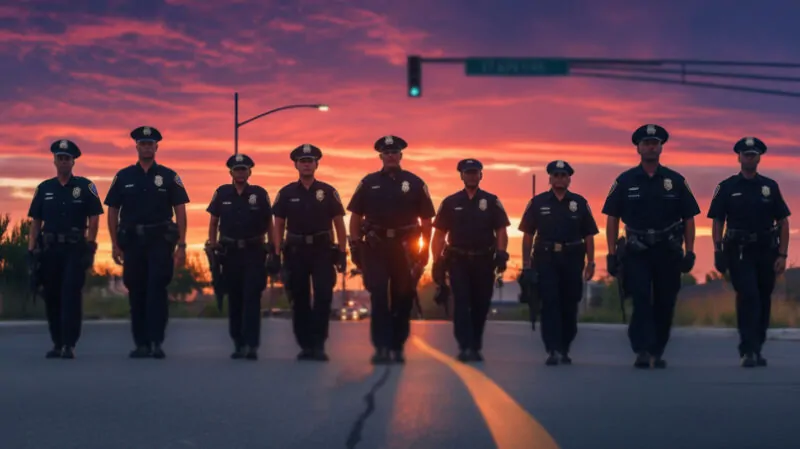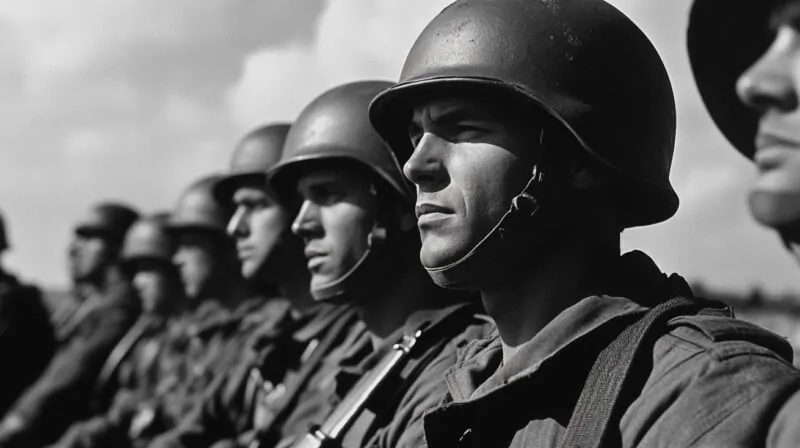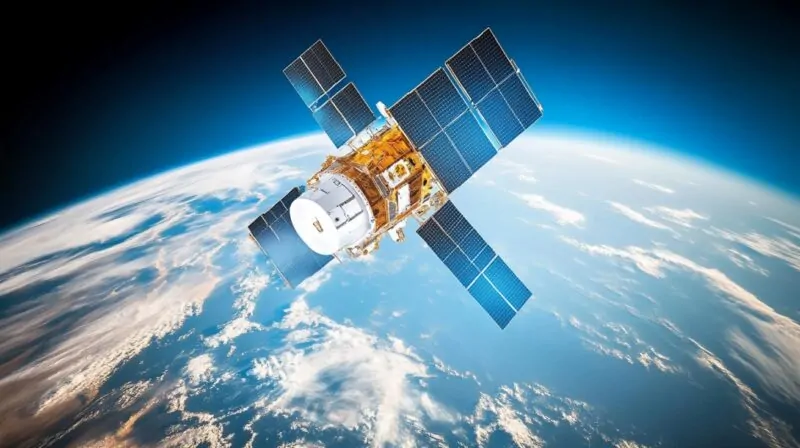The COVID-19 pandemic brought global disruption, affecting health systems, economies, and security frameworks.
Military forces played a critical role in managing the crisis, contributing to logistical operations, medical support, and maintaining public order.
At the same time, waves of disinformation created additional obstacles, undermining trust and complicating efforts to control the spread of the virus.
Examining the military’s response and the challenges it faced offers insight into its adaptability during an unprecedented crisis.
Let’s talk about how the COVID-19 crisis impacted the military.
Table of Contents
ToggleThe Role of the Military in the COVID-19 Response
The COVID-19 pandemic created an urgent need for organized, large-scale intervention, and military forces worldwide were among the first to mobilize. Their ability to coordinate logistics, provide medical support, and maintain order became essential in containing the crisis.
Military personnel played a role both domestically and internationally, offering aid, enforcing regulations, and adapting their own operational structures to maintain readiness.
While their efforts brought relief, the crisis also exposed challenges, including balancing military authority with civilian oversight and adapting to a changing security environment.
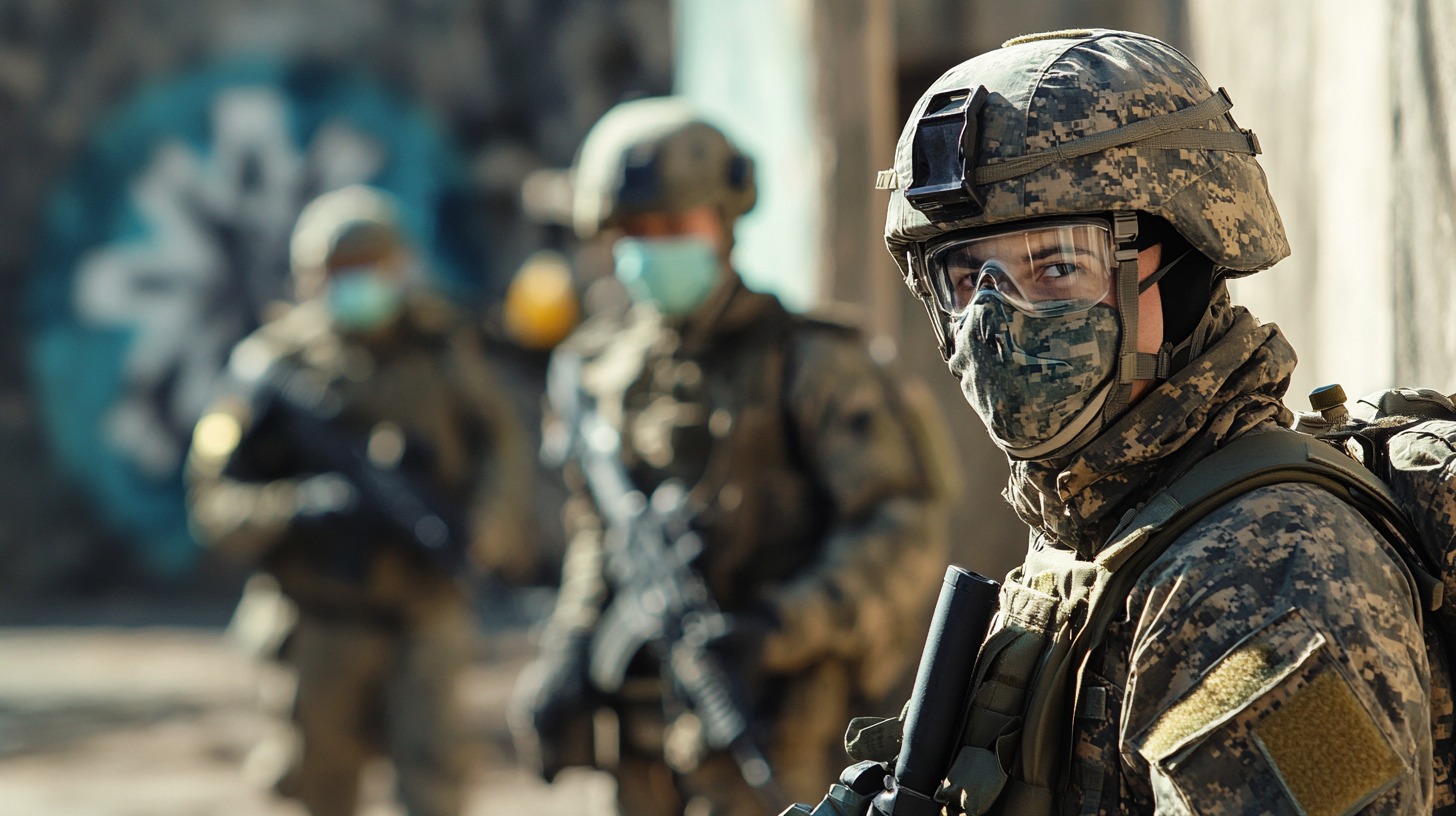
Domestic Military Involvement
As healthcare systems became overwhelmed, military units were called upon to support civilian agencies. National Guard forces in the U.S. and their equivalents in other nations were deployed to assist with pandemic response efforts.
These operations required coordination with public health agencies and other government institutions to ensure an efficient and effective response.
Key roles of domestic military involvement included:
| Category | Task 1 | Task 2 | Task 3 |
|---|---|---|---|
| Medical Assistance | Establishing field hospitals in urban centers | Providing additional intensive care unit personnel to overburdened hospitals | Transporting patients in critical condition to available treatment centers |
| Logistical Support | Delivering medical supplies, including personal protective equipment and ventilators | Managing vaccine distribution efforts to ensure rapid inoculation | Deploying military aircraft and ground transportation to maintain supply chains |
| Security and Enforcement | Supporting law enforcement in enforcing quarantine measures | Assisting in crowd control at testing and vaccination sites | Protecting critical infrastructure, including supply depots and medical facilities |
The rapid expansion of military involvement in civilian affairs raised concerns about governance and oversight.
Democratic societies typically restrict military intervention in domestic matters. The presence of uniformed personnel in non-combat roles has sparked discussions about the scope of military authority in crises.
Governments faced the challenge of balancing the immediate benefits of military assistance with the long-term need to preserve civilian control.
Clearer policies for future health emergencies became a priority to prevent conflicts over jurisdiction and public trust.
Global Military Response
Ohio National Guard and Ohio Military Reserve members play an important role in assisting communities with COVID-19 sample collections.
In the new Buckeye Guard newscast, one member of the team explains the impact the mission is having on Ohio communities.#InThisTogetherOhio pic.twitter.com/PsWTlBX2v9
— Ohio National Guard (@OHNationalGuard) December 11, 2020
The pandemic reinforced the necessity of cross-border cooperation.
While each country managed its crisis independently, military forces played a key role in international aid missions, ensuring that medical resources reached the areas where they were most needed.
This required coordination between governments, military organizations, and civilian agencies.
Global military efforts included:
| Category | Task 1 | Task 2 | Task 3 |
|---|---|---|---|
| Humanitarian Aid and Medical Support | Deploying military medical personnel to assist allies and partners | Sending mobile hospitals and ventilators to struggling regions | Conducting airlifts to deliver critical supplies |
| Vaccine Development and Distribution | Providing logistical support for research institutions working on vaccine development | Assisting in mass production and distribution efforts | Ensuring vaccine security in high-risk areas |
| Coordination with Civilian Agencies | Collaborating with international organizations such as the World Health Organization and emergency response agencies | Facilitating communication between military and civilian responders to prevent duplication of efforts | Using military transport networks to deliver medical aid efficiently |
Despite these efforts, international military missions encountered obstacles. Resource shortages, geopolitical tensions, and logistical delays made some operations more challenging.
The crisis revealed both the strengths and limitations of military-led humanitarian assistance, prompting discussions about refining strategies for future global emergencies.
Operational Adjustments in Military Readiness
How the Secret US Anti-Vax Operation Disrupted Chinese Sinovac from the #Philippines to Central Asia and the Middle East https://t.co/L6VnaNmL1l via @MDiplomacyWORLD
— Modern Diplomacy (@MDiplomacyWORLD) June 17, 2024
The pandemic disrupted military operations, forcing rapid adjustments to ensure force readiness while protecting personnel from infection. Training schedules were altered, recruitment procedures adapted, and deployments reassessed.
Many units had to rethink their approach to maintaining operational capability without compromising safety.
Key adjustments included:
| Category | Task 1 | Task 2 | Task 3 |
|---|---|---|---|
| Training and Recruitment Modifications | Reducing in-person training exercises to limit infection risk | Implementing virtual training sessions where possible | Adjusting recruitment procedures to maintain intake while adhering to health guidelines |
| Force Protection Measures | Imposing strict quarantine protocols before and after deployments | Enhancing testing and screening measures within bases and military units | Limiting personnel movement between facilities to contain outbreaks |
| USS Roosevelt Outbreak | One of the most high-profile military outbreaks occurred aboard the USS Roosevelt, where hundreds of sailors tested positive | The incident prompted a review of naval containment procedures, leading to stricter protocols for managing outbreaks on ships | Long-term effects included changes in deployment strategies to reduce risks in confined environments |
Despite these adjustments, the military’s ability to respond to crises remained intact. However, the pandemic underscored the need for increased flexibility in-force management. Future conflicts or emergencies may require similar adaptations to maintain operational effectiveness under unpredictable conditions.
The COVID-19 crisis tested military organizations on multiple fronts. Their role in supporting domestic and international response efforts was invaluable, but the situation also highlighted vulnerabilities that required immediate and long-term solutions.
Adaptations in training, logistics, and force protection will likely remain in place, shaping how military institutions prepare for future global crises.
Vulnerabilities and Challenges Faced by the Military
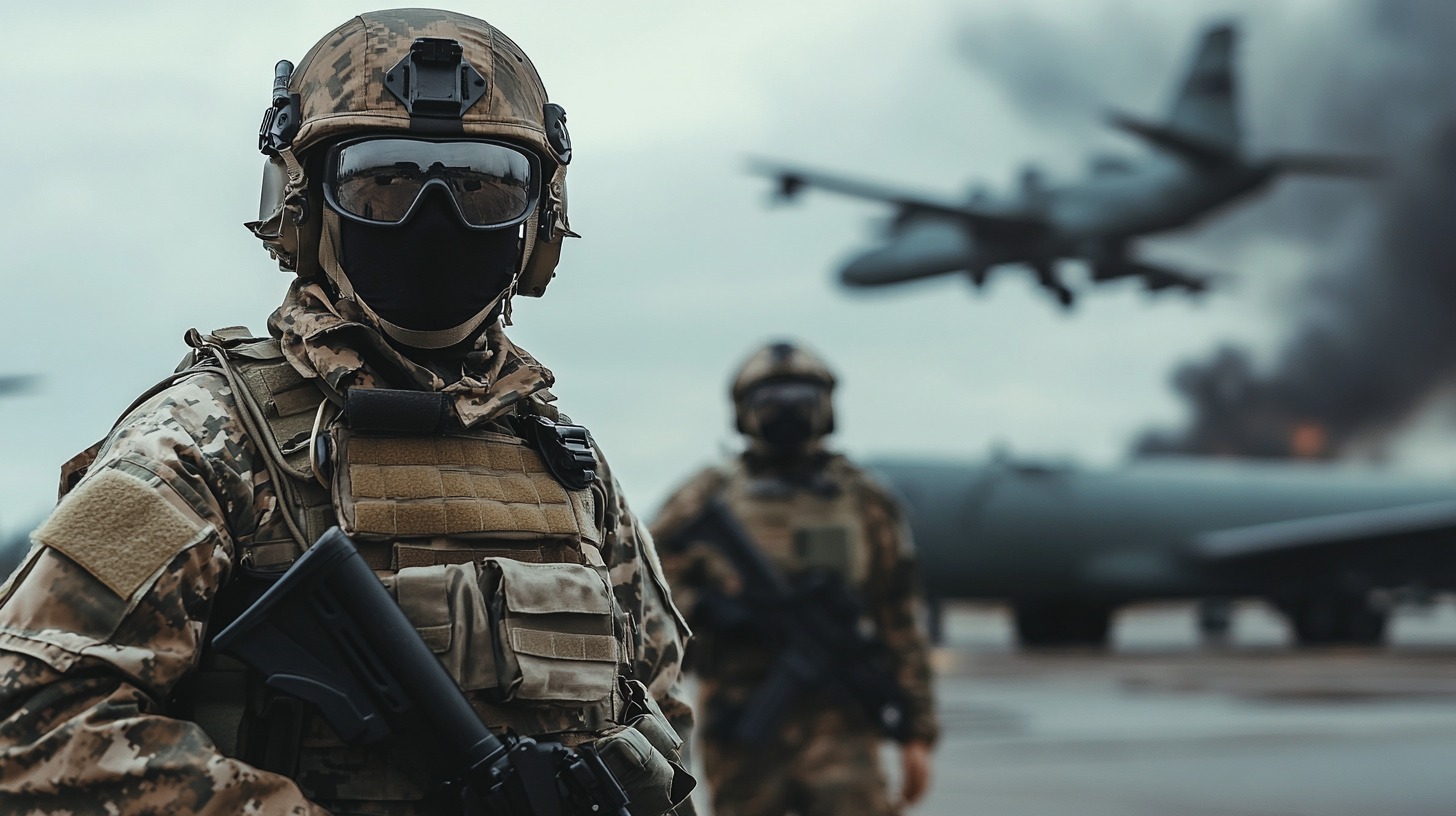
The COVID-19 pandemic exposed significant challenges for military forces worldwide, affecting health, logistics, and operational readiness. Service members had to adapt to new protocols while continuing to fulfill critical duties.
The virus spread rapidly in military settings, forcing defense institutions to implement strict containment measures.
Psychological strain increased as personnel faced prolonged deployments, isolation, and uncertainty regarding their families’ safety. In addition, logistical and operational issues disrupted standard military procedures, impacting everything from training exercises to international deployments.
These difficulties underscored the need for long-term adjustments in military preparedness and response strategies.
Health Risks and Force Protection

Due to the nature of their living and working environments, military personnel were at heightened risk. Bases, ships, and barracks created conditions where outbreaks could spread quickly. Unlike civilian populations, service members had limited options for social distancing, making it difficult to prevent infections.
- Barracks, naval vessels, and field deployments forced personnel into close proximity, increasing the likelihood of virus transmission.
- The constant movement of personnel between duty stations made containment efforts more complex.
- Military personnel assisted with medical responses, border security, and logistics, increasing exposure risks.
Efforts to mitigate these risks required significant adjustments to everyday operations.
- Frequent COVID-19 testing became standard practice, with mandatory quarantines for those exposed.
- Travel between bases and operational zones was limited to minimize transmission risks.
- Military health services prioritized rapid immunization of personnel to maintain operational effectiveness.
However, physical health was not the only concern. Psychological strain became a growing issue, with service members reporting increased stress, anxiety, and depression.
- Many service members were kept on duty for longer periods due to travel restrictions, preventing them from returning home.
- Uncertainty about the health and safety of loved ones led to significant emotional distress.
- Those already dealing with combat-related stress faced additional mental health challenges due to prolonged isolation and the unpredictable nature of the pandemic.
Mental health resources were expanded to address these concerns, but the long-term effects of prolonged stress remain a pressing issue for military leadership.
Logistical and Operational Struggles

The pandemic created unprecedented logistical challenges, disrupting global military operations and straining resources. Military leaders had to balance pandemic response efforts with existing security responsibilities, often making difficult decisions about resource allocation.
- Essential equipment, including medical supplies and protective gear, faced delivery delays due to manufacturing and transportation bottlenecks.
- Quarantines and infections led to temporary reductions in available forces, affecting operational readiness.
- Standard training programs were interrupted, leaving some units unprepared for future missions.
Adapting to these disruptions required immediate operational adjustments.
- Many large-scale drills were either postponed or restructured to limit physical contact among participants.
- Virtual simulations and online instruction became more common to compensate for in-person limitations.
- Military planners adjusted troop movements to ensure continuous force readiness while minimizing unnecessary exposure risks.
Balancing these logistical issues with traditional defense duties proved to be a constant challenge. Military leaders had to allocate resources carefully and ensure that pandemic-related missions did not undermine overall security commitments.
The experience provided valuable lessons for future contingency planning, highlighting the need for flexible, adaptive military strategies in the face of global crises.
The Disinformation Challenge and Its Impact on Military Operations
The COVID-19 pandemic created an environment where false information spread rapidly, making an already complex crisis even more difficult to manage. The military, often at the forefront of emergency response, found itself targeted by misinformation campaigns that distorted its role in handling the pandemic.
These misleading narratives undermined public trust, disrupted response efforts, and fueled conspiracy theories that created resistance to official health measures.
While some misinformation arose organically, other efforts were deliberate and orchestrated by state and non-state actors aiming to weaken confidence in institutions.
Addressing these challenges required a multi-faceted approach, balancing public communication with counter-disinformation strategies.
The Rise of Disinformation During COVID-19
False information about military involvement in the pandemic spread across multiple platforms, fueling confusion and distrust. Misinformation ranged from exaggerated claims about the virus to conspiracy theories regarding government control.
- Claims that military personnel were enforcing strict lockdowns, leading to fears of martial law.
- False reports suggest that vaccines distributed by military units contained harmful substances or tracking devices.
- Assertions that the virus was deliberately created as part of a military experiment and subsequently leaked.
- Manipulated footage and photographs misrepresenting military activities, leading to panic in some communities.
In addition to organic misinformation, state-sponsored disinformation played a critical role in shaping public perception.
- Erode confidence in public health measures by suggesting that military involvement meant hidden agendas.
- Amplify existing divisions within societies by portraying military-enforced quarantines as authoritarian crackdowns.
- Undermine global alliances by spreading rumors that certain nations were using their militaries to hoard medical supplies while leaving others vulnerable.
Social media manipulation intensified these narratives. Fake accounts, automated bots, and doctored content flooded online platforms, making it increasingly difficult for the general public to distinguish fact from fiction.
Effects on Public Trust and Civil-Military Relations

The relationship between the military and civilian populations faced significant strain. Trust, an essential factor in successful crisis response, weakened due to the spread of disinformation.
- Increased resistance to public health initiatives. Many citizens became wary of military-administered vaccine programs, delaying efforts to achieve widespread immunization.
- Protests and acts of defiance against perceived military overreach. False reports of forced vaccinations and military control led to civil unrest in some areas.
- Hesitancy in accepting military assistance. In regions where misinformation took hold, people were reluctant to visit field hospitals or receive aid delivered by military units.
To counteract these effects, military public affairs teams took steps to clarify their mission and reinforce transparency.
- Regular press briefings to communicate clear, accurate information about military-led pandemic response efforts.
- Collaboration with civilian agencies to ensure messaging remained consistent across different levels of government.
- Social media monitoring and rapid-response teams to debunk misinformation as it emerged.
Despite these efforts, the volume and speed of disinformation remained a significant hurdle. In many cases, false narratives spread faster than corrective measures, reinforcing the need for stronger preemptive strategies.
Interesting Fact: According to CNN, more than 8,000 individuals were discharged from the US Army after rejecting vaccination.
Lessons from Previous Disinformation Campaigns

The challenges posed by misinformation during the pandemic were not entirely new. Past military operations have faced similar disinformation threats, particularly in conflict zones and humanitarian missions.
Reviewing historical examples provides valuable insights into best practices for countering false narratives.
- Direct interaction with local populations helps dispel rumors and reinforces trust in military assistance. When service members engage with the communities they support, misinformation loses its grip.
- Instead of waiting for misinformation to spread, preemptively addressing potential concerns through public outreach reduces the likelihood of disinformation gaining traction.
- Working with journalists, social media platforms, and fact-checking organizations strengthens the ability to dismantle false narratives quickly.
- Educating the public on how to identify and verify information helps build long-term resilience against disinformation campaigns.
Looking ahead, military organizations must continue refining their information strategies.
Strengthening digital communication channels, fostering partnerships with civilian media, and adapting to new methods of disinformation will be essential in maintaining public confidence.
Trust remains one of the military’s most valuable assets, and protecting it requires ongoing vigilance against the threats posed by misinformation.
The Bottom Line
The Covid pandemic tested the military’s ability to respond to an unprecedented health crisis while managing logistical, operational, and informational challenges.
Disruptions to readiness, supply chains, and personnel well-being highlighted vulnerabilities that required swift adaptation.
At the same time, COVID-19 disinformation campaigns complicated efforts to maintain public confidence in military-led initiatives.
Future preparedness efforts must address these issues through refined strategies, ensuring that armed forces remain capable of responding effectively to large-scale emergencies.
Related Posts:
- Impact of Off-Duty Injuries on Military Benefits -…
- The Power of Guerrilla Warfare - Small Armies, Big Impact
- U.S. Military Alliances and its Partnerships Across…
- Can the US Army Maintain Its Technological Edge Over…
- PCS Moves and Entitlements: What’s Covered and How…
- A Look at US Military Helicopters: Past, Present, and Future

